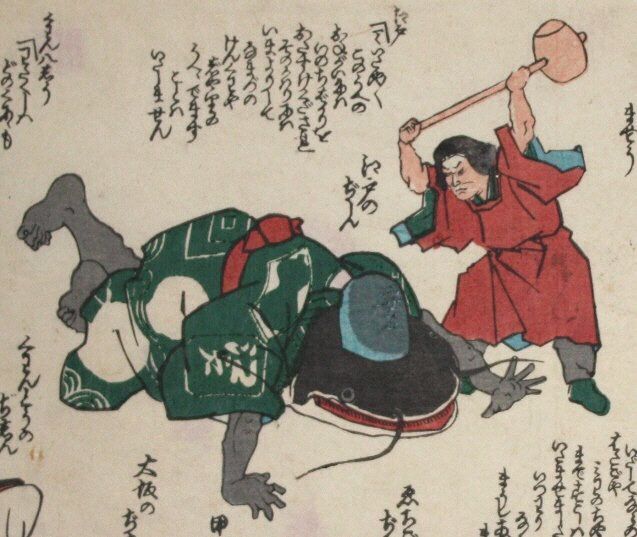

According to a popular Japanese myth the cause of earthquakes is the giant fish Namazu, often depicted as a giant catfish in woodcuts called namazu-e. He is considered one of the yo-kai, creatures of mythology and folklore causing misfortune and disasters. Only the god Kashima can immobilize namazu and with the help of a heavy capstone he will push the fish against the foundations of earth. However the god sometimes got tired or is distracted from his duty, Namazu will use these moments to wiggle his tail, causing an earthquake in the human world.
Namazu depictions are known since the fifteenth century, however only in the late eighteenth century he became associated with natural disasters. In the Tokugawa period (1603-1868) the giant catfish was as a river deity associated with floods or heavy rainfall. He acts often as a premonition for danger, warns people from an imminent catastrophe or swallows dangerous water-dragons, preventing further disasters. The dragon was a very old and powerful symbol, imported from China, and was considered the main culprit of many sorts of disasters, including earthquakes. During the 18th century the giant namazu gradually replaces the dragon in the role as mischief-maker. This change from the dragon to Namazu was minor, because dragons were also associated to water and rivers and therefore considered closely related to the catfish myth.
During the 19th century and especially after the earthquake of Edo(modern Tokyo) in 1855 the wrongdoings of Namazu were considered more a punishment of human greed, as it was believed that the catfish by causing havoc forces people to redistribute equally their accumulated wealth. Namazu became known as yonaoshi daimyojin, the "god of world rectification".

No comments:
Post a Comment